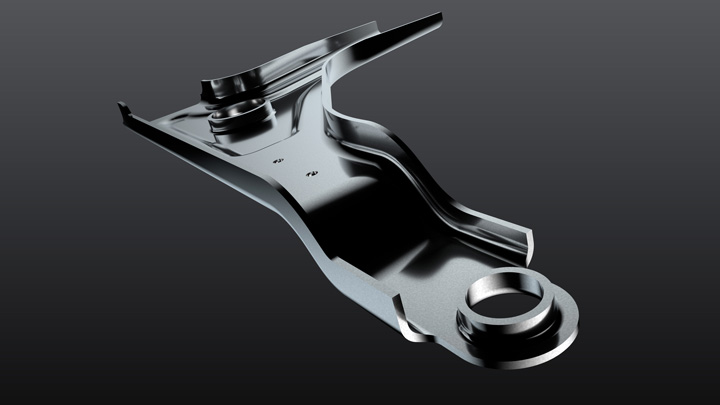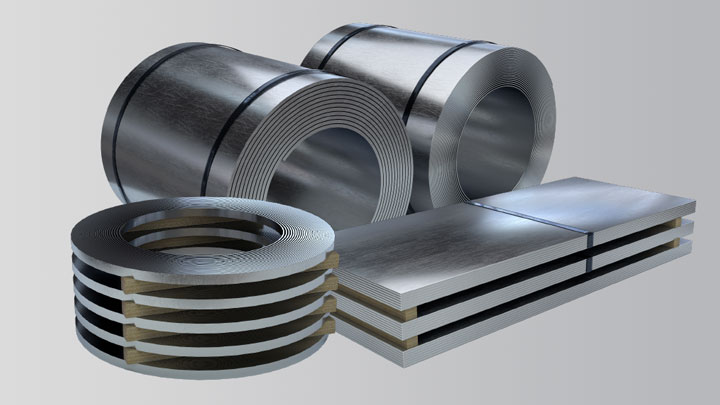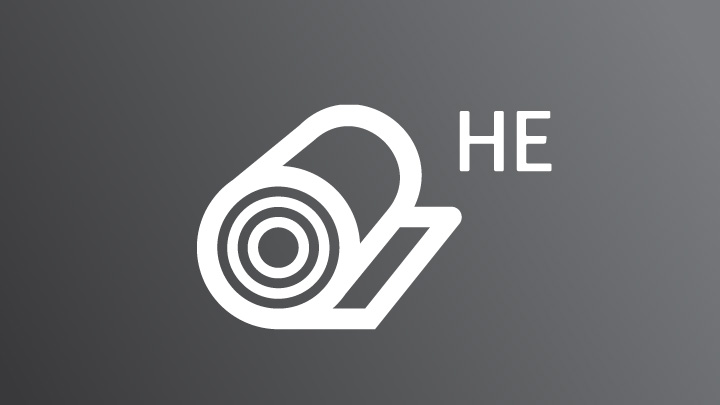What is the most important thing to know about these new Docol® hot-rolled 800MPa automotive steel grades?
Daniel Sund: There are many different ways to measure edge ductility, but the standard, starting-point test — maybe I should say “simplistic test” — is the ISO 16630 hole expansion ratio. SSAB guarantees that the new Docol® HR800HER grades will have 45% and 65% hole expansion rates, respectively — but their typical HER values are much higher than that, 75% to 100%, respectively, which are among the highest on the market for 800 megapascal automotive steels.
Why is SSAB putting so much emphasis on edge ductility for AHSS steel?
Marcus Folmerz: I would say 95% of all forming issues that our automotive customers bring to SSAB’s Knowledge Service Center are related to edges that have been cut and stretched but end up cracking. Most companies know how to predict other AHSS forming issues. But predicting edge problems can be very, very difficult. What can happen, then, is customers can be fully committed to specific part design and find themselves in full production only to discover an unacceptable number of cracked edges. These new high edge ductility AHSSs can step in as “problem-solvers.” Or, they can even be used on auto parts where you want higher confidence that you won’t have cracked edges.
Have automakers and Tier 1s been asking for this high level of edge ductility?
Daniel Sund: Yes. SSAB customers have been very focused on this particular aspect of AHSS formability. In the last few years, the demand for greater AHSS edge ductility has been quite high, and it continues to grow.
Marcus Folmerz: In addition to solving problems with existing part designs, higher edge ductility also lets you have more complex designs for your stretched or raised edges — your high flanges and so on — with a higher margin of safety against cracked edges.
These new 800MPa automotive steels also have impressive FLDs: is that in anyway related to their very high edge ductility?
Marcus Folmerz: No, no, no. There is no correlation — positive or negative — between the forming limit diagram and edge ductility. We need to remind customers of this all the time. That said, yes, these new steels do have very good FLDs, so they will do well across a variety of forming processes. Put another way, we’ve optimized these 800MPa steels for extreme edge ductility but they are also very good at other forming operations.
Haven’t auto OEMs been using a Docol® HR800CP for a few years already?
Daniel Sund: Yes, they have. But we’ve now improved our hot-rolled 800MPa complex phase steels with higher levels of edge ductility. For Docol HR800HER-75 we test every shipment to guarantee a minimum of 45% HER, with typical values of 75% HER. And for Docol HR800HER-100 the guaranteed minimum is 65% of HER with an anticipated average or typical HER of 100%.
So, how did SSAB achieve such high edge ductility on these new 800MPa steels?
Daniel Sund: Well, first we started by optimizing their microstructures. Then we have very strict quality control measures, including vacuum tank degassing, to ensure the inner cleanliness of each steel slab. We also have very sophisticated control of both temperatures and reductions throughout the hot-rolling process.
What are the possible automotive applications for these new 800MPa steels?
Robert Ström: There are many possible applications for these 800 megapascal materials. Control arms, particularly lower control arms, will be an important application. But really, all of the HR steels — the Docol HR800CP, HR800HER-75 and HR800HER-100 — can be a good fit for high edge ductility applications that require good fatigue properties. For example, parts that are constantly moving and shaking. So, I’m thinking of multilink suspensions, trailing arms, torsion beams, and subframes.
I like to think of these steels as having the “Golden Middle” of desired properties. When you think about it, many of these properties should contradict one another: formability vs. high strength, high edge ductility vs. good crash performance. But these steels deliver all of these properties — and, especially, they deliver very high edge ductility.
What’s the current status of these new 800MPa steels?
Robert Ström: You can order them now using the Docol® AHSS Trial Material Stock Program and we have many customers testing them now. At the same time, SSAB is running long-term low-cycle and high-cycle fatigue tests.
Daniel Sund: Yes, we very much encourage customer testing. It could be on a new part design or an existing part that has had some edge cracking concerns.
Does SSAB have AutoForm Material Cards for all 800MPa steels?
Marcus Folmerz: Yes. To aid them in their design and forming simulations, customers can contact their Docol® representative for the AutoForm cards for these grades. Or have their representative set them up for access to Docol® Test Drive download portal. And, as always, SSAB’s Knowledge Service Center can help as you prepare your simulations for new Docol AHSS grades.






